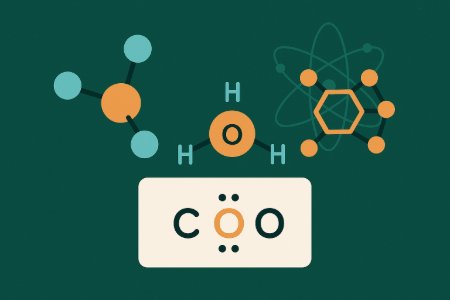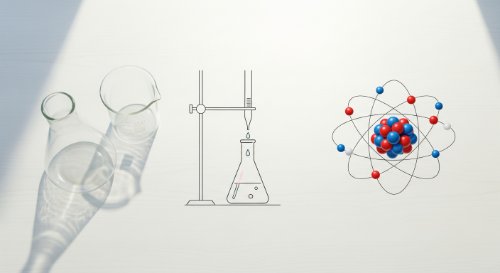Resonance structures - Lewis Structures | Chemical Bonding and Shapes of Molecules - Chemistry (Undergraduate Foundation)
SPONSORED Get Personalized Tutoring NowStruggling with a tough concept or looking to advance your skills? Our expert tutors offer one-to-one guidance tailored to your unique needs.
Get instant support, clear explanations, and practical strategies to master even the most challenging subjects. With flexible scheduling and customized learning plans, success is just a session away.
Book your personalized tutoring today and start achieving your academic goals!
Get Personalized Tutoring NowStruggling with a tough concept or looking to advance your skills? Our expert tutors offer one-to-one guidance tailored to your unique needs.
Get instant support, clear explanations, and practical strategies to master even the most challenging subjects. With flexible scheduling and customized learning plans, success is just a session away.
Book your personalized tutoring today and start achieving your academic goals!
Struggling with a tough concept or looking to advance your skills? Our expert tutors offer one-to-one guidance tailored to your unique needs. Get instant support, clear explanations, and practical strategies to master even the most challenging subjects. With flexible scheduling and customized learning plans, success is just a session away. Book your personalized tutoring today and start achieving your academic goals!
 Chemical Bonding and Shapes of Molecules - Chemistry (Undergraduate Foundation)The shape of a molecule dictates its function. This course provides a practical, foundational treatment of chemical bonding and molecular geometry - the principles governing how atoms connect to form substances. It covers ionic and covalent bonding, the drawing of Lewis structures, and methods for determining molecular shape using VSEPR theory and orbital hybridisation. Finally, we examine intermolecular forces that control a substance's physical properties.
A command of this material is essential for molecular design. Knowledge of bonding and geometry dictates the properties of everything from pharmaceuticals, where shape governs drug-receptor specificity, to new materials like polymers and catalysts. Mastery of this foundational knowledge is the starting point for developing or synthesising any new chemical compound. Our system uses comprehensive videos and allows you to ask questions directly, making it fully online and easy to master at your pace.
By the end of this course, you will be able to draw correct Lewis structures for any molecule, predict its three-dimensional geometry and polarity using VSEPR theory, determine the central atom's hybridisation and bond types, and identify the various intermolecular forces present in a substance.
This course is mandatory for all undergraduate students of chemistry, biochemistry, and materials science, and is a direct prerequisite for studying organic chemistry. It benefits anyone needing a rigorous, structured, student-centred refresher or initial exposure to this critical subject, assuming a complete understanding of atomic theory and electronic configuration.
Chemical Bonding and Shapes of Molecules - Chemistry (Undergraduate Foundation)The shape of a molecule dictates its function. This course provides a practical, foundational treatment of chemical bonding and molecular geometry - the principles governing how atoms connect to form substances. It covers ionic and covalent bonding, the drawing of Lewis structures, and methods for determining molecular shape using VSEPR theory and orbital hybridisation. Finally, we examine intermolecular forces that control a substance's physical properties.
A command of this material is essential for molecular design. Knowledge of bonding and geometry dictates the properties of everything from pharmaceuticals, where shape governs drug-receptor specificity, to new materials like polymers and catalysts. Mastery of this foundational knowledge is the starting point for developing or synthesising any new chemical compound. Our system uses comprehensive videos and allows you to ask questions directly, making it fully online and easy to master at your pace.
By the end of this course, you will be able to draw correct Lewis structures for any molecule, predict its three-dimensional geometry and polarity using VSEPR theory, determine the central atom's hybridisation and bond types, and identify the various intermolecular forces present in a substance.
This course is mandatory for all undergraduate students of chemistry, biochemistry, and materials science, and is a direct prerequisite for studying organic chemistry. It benefits anyone needing a rigorous, structured, student-centred refresher or initial exposure to this critical subject, assuming a complete understanding of atomic theory and electronic configuration.
The shape of a molecule dictates its function. This course provides a practical, foundational treatment of chemical bonding and molecular geometry - the principles governing how atoms connect to form substances. It covers ionic and covalent bonding, the drawing of Lewis structures, and methods for determining molecular shape using VSEPR theory and orbital hybridisation. Finally, we examine intermolecular forces that control a substance's physical properties. A command of this material is essential for molecular design. Knowledge of bonding and geometry dictates the properties of everything from pharmaceuticals, where shape governs drug-receptor specificity, to new materials like polymers and catalysts. Mastery of this foundational knowledge is the starting point for developing or synthesising any new chemical compound. Our system uses comprehensive videos and allows you to ask questions directly, making it fully online and easy to master at your pace. By the end of this course, you will be able to draw correct Lewis structures for any molecule, predict its three-dimensional geometry and polarity using VSEPR theory, determine the central atom's hybridisation and bond types, and identify the various intermolecular forces present in a substance. This course is mandatory for all undergraduate students of chemistry, biochemistry, and materials science, and is a direct prerequisite for studying organic chemistry. It benefits anyone needing a rigorous, structured, student-centred refresher or initial exposure to this critical subject, assuming a complete understanding of atomic theory and electronic configuration.
 CHM 101: General Chemistry IThis learning track delivers the complete NUC CCMAS curriculum for General Chemistry I. It is a comprehensive programme designed to build a robust, university-level foundation in modern chemistry. The track systematically covers all essential topics, from atomic theory, chemical bonding, and the states of matter, to the quantitative principles of stoichiometry, equilibrium, thermodynamics, and kinetics.
This programme is for first-year undergraduates in science, technology, engineering, and mathematics (STEM) faculties who are required to take CHM 101. It is also essential for any student or professional globally who needs a rigorous and complete foundation in first-year university chemistry for further study or career development.
This track delivers a full skill set in chemical theory and quantitative problem-solving. Graduates will be able to determine molecular structures, calculate reaction quantities, analyse the energetics and rates of reactions, and solve complex equilibrium problems. This programme provides the non-negotiable prerequisite knowledge for all subsequent chemistry courses and for any degree in the physical sciences, engineering, or medicine.
CHM 101: General Chemistry IThis learning track delivers the complete NUC CCMAS curriculum for General Chemistry I. It is a comprehensive programme designed to build a robust, university-level foundation in modern chemistry. The track systematically covers all essential topics, from atomic theory, chemical bonding, and the states of matter, to the quantitative principles of stoichiometry, equilibrium, thermodynamics, and kinetics.
This programme is for first-year undergraduates in science, technology, engineering, and mathematics (STEM) faculties who are required to take CHM 101. It is also essential for any student or professional globally who needs a rigorous and complete foundation in first-year university chemistry for further study or career development.
This track delivers a full skill set in chemical theory and quantitative problem-solving. Graduates will be able to determine molecular structures, calculate reaction quantities, analyse the energetics and rates of reactions, and solve complex equilibrium problems. This programme provides the non-negotiable prerequisite knowledge for all subsequent chemistry courses and for any degree in the physical sciences, engineering, or medicine.
This learning track delivers the complete NUC CCMAS curriculum for General Chemistry I. It is a comprehensive programme designed to build a robust, university-level foundation in modern chemistry. The track systematically covers all essential topics, from atomic theory, chemical bonding, and the states of matter, to the quantitative principles of stoichiometry, equilibrium, thermodynamics, and kinetics. This programme is for first-year undergraduates in science, technology, engineering, and mathematics (STEM) faculties who are required to take CHM 101. It is also essential for any student or professional globally who needs a rigorous and complete foundation in first-year university chemistry for further study or career development. This track delivers a full skill set in chemical theory and quantitative problem-solving. Graduates will be able to determine molecular structures, calculate reaction quantities, analyse the energetics and rates of reactions, and solve complex equilibrium problems. This programme provides the non-negotiable prerequisite knowledge for all subsequent chemistry courses and for any degree in the physical sciences, engineering, or medicine.